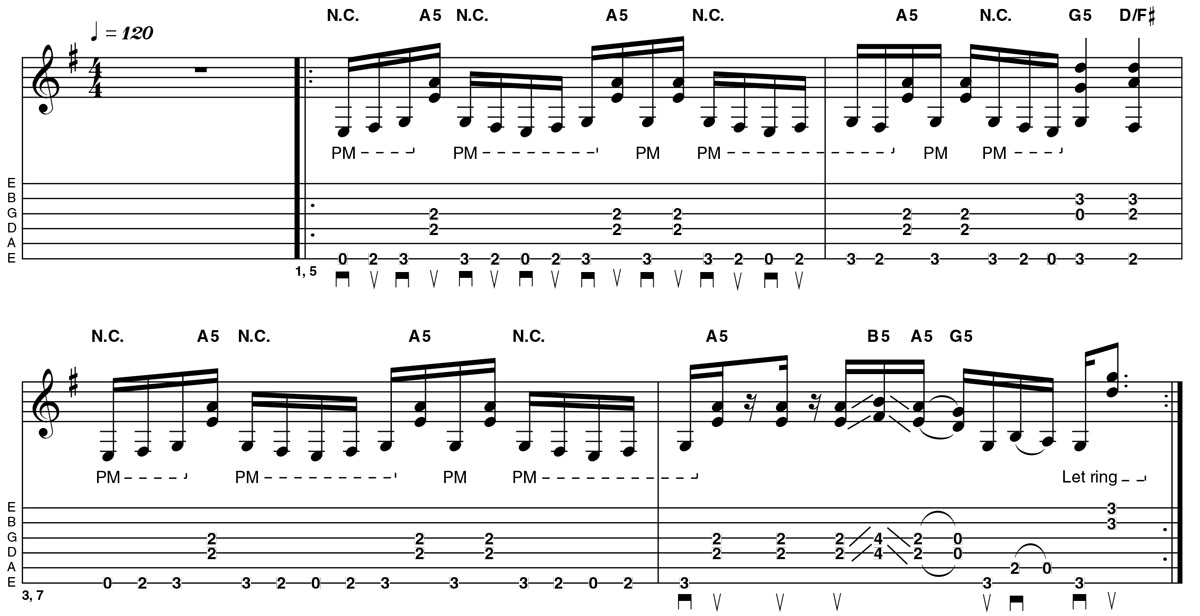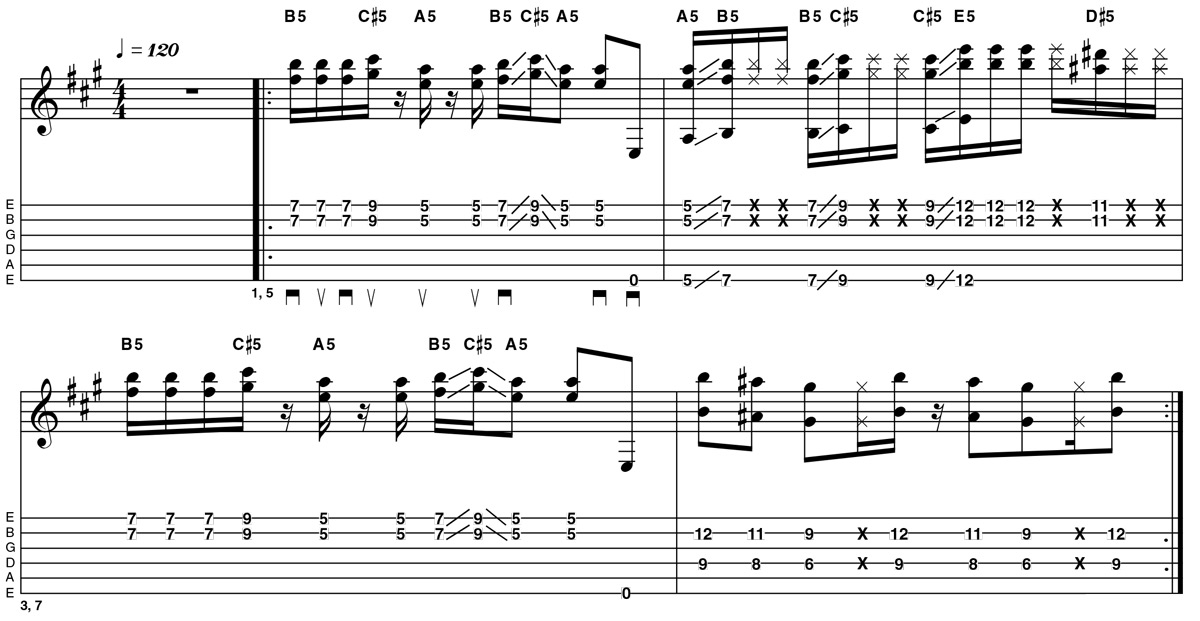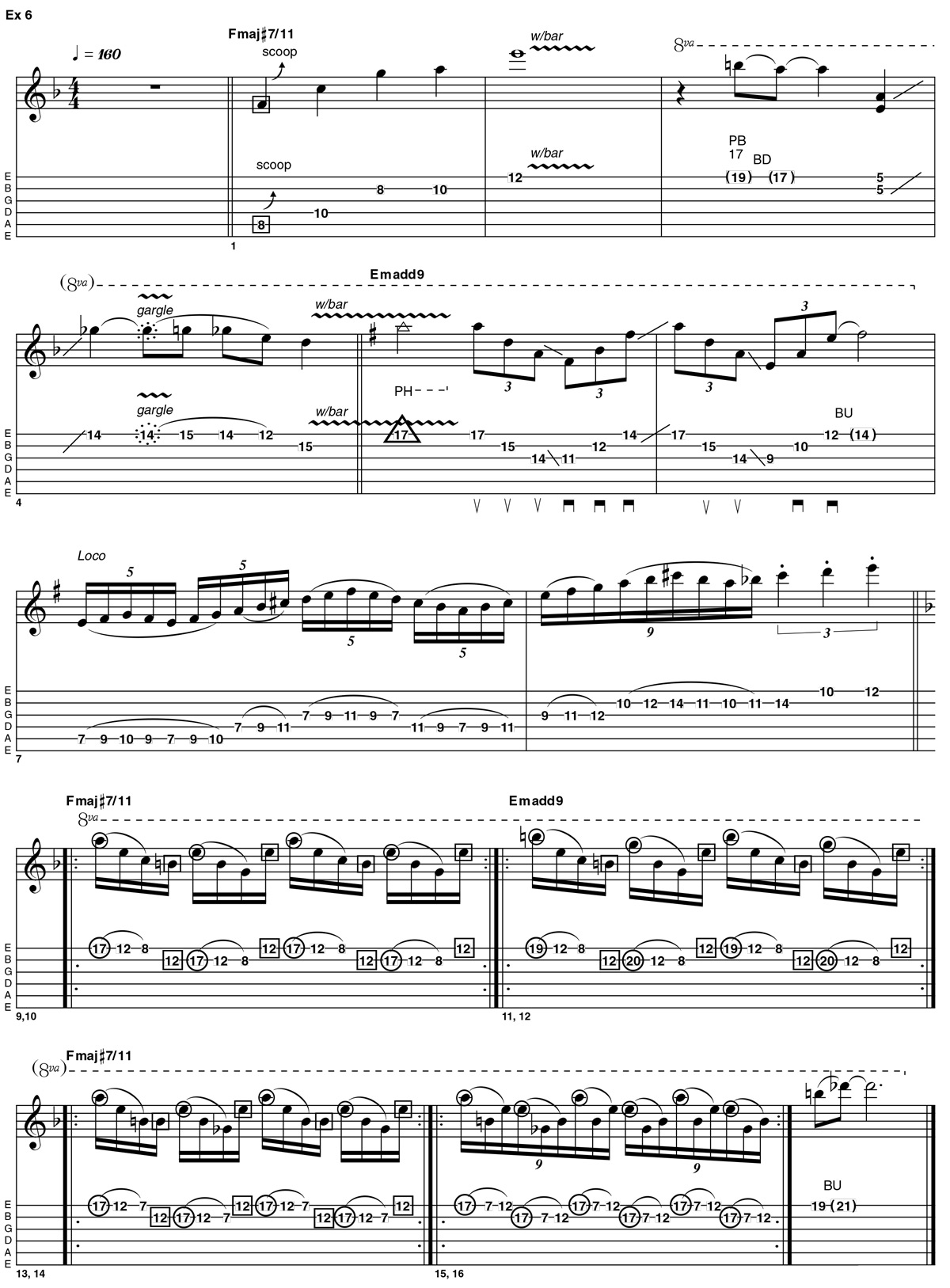Guitar lesson: Are you up to the challenge of these Steve Vai-style riffs and licks?
Guitar skills: Learn the leads and rhythms behind Passion & Warfare

Guitar skills: With its creative songwriting, pristine production and jaw-dropping skill, it’s hard to believe that Passion And Warfare was Steve Vai’s second release.
Of course, Steve was already a seasoned live performer and session guitarist, having had a stint with Frank Zappa on the albums, You Are What You Is, Ship Arriving Too Late To Save A Drowning Witch and Them Or Us - to name but a few.
Steve’s David Lee Roth period began in 1986, when he recorded one of the greatest rock records of the decade, Eat ’Em And Smile. Steve is awe-inspiring, and arguably steals the limelight from one of rock’s most charismatic frontmen. Proving he could step into the shoes of Eddie Van Halen was a huge boost to Steve’s career and exposed him to a wider mainstream audience.

The audience was certainly listening in September 1990 when Passion & Warfare was unleashed on the world’s unsuspecting guitar nerds. Like Satriani’s Surfing With The Alien three years earlier, the album redefined what instrumental guitar music could be.
Not only was it heavy with tracks like Erotic Nightmares, but it was also fun and tongue in cheek with The Audience Is Listening. Of course, For The Love Of God was so packed full of emotion that it could make grown men weep into their fretboards.
With the following examples we look at some of the techniques and approaches used throughout the record, starting with a heavy syncopated riff that requires deft alternate picking and string-skipping chops, which combine to create a tight and punchy effect.

Example 2’s contrary motion effect involves playing an ascending doublestop melody while simultaneously playing a descending bassline.
Want all the hottest music and gear news, reviews, deals, features and more, direct to your inbox? Sign up here.
Our next example emulates Steve’s ‘harmoniser’ sounds, adding major 6th and a perfect 4th, along with some delay to create a ping-pong effect - you’ll see instructions on how to create the effect. Examples 4 and 5 focus on Steve’s clean and funky rhythm.
Finally, we have a big solo ballad piece with note choices shifting between F Lydian and E Dorian - both bright and positive sounding modes.
Expressiveness is everything when it comes to delivering a Vai-style melody; every nuance from the vibrato, to pinched harmonics, to whammy bar scoops and gargles is carefully placed, but should never seem gimmicky.
Practise the solo in short sections focusing on connecting the techniques together naturally and - as Steve would tell you - above all, musically.
Example 1: hard rock riff
This riff is based in E Minor (E-F#-G-A-B-C-D) with the first three notes played on the sixth string with palm-muting. Play the 2nd-fret doublestop with a first-finger barre and lift off your palm to let the notes ring out.
Keep the momentum of the riff up by keeping your pick moving in alternate down and upstrokes.
Example 2: syncopated chords
This riff features a descending bassline and ascending doublestops played in contrary motion. Chromatic notes add tension, but the tonality is Mixolydian (1-2-3-4-5-6-b7) with an added minor 3rd and bluesy b5.
Learn the doublestops using first, third and fourth fingers then add the bass notes with the fingers you have left.
Example 3: intervallic arpeggios with delay and pitch-shifter effects
The first two bars alternate between A and its 5th E, and the second two bars are exactly the same, only played a b3rd higher.
For the effects, set 16th note with repeats so the repeated note lands in-between the played notes. Finally, feed the effect into a pitch-shifter set to a major 6th higher (play A to get F# too).
Example 4: funky doublestops
This riff relies on a loose, relaxed wrist when strumming these funky 16th notes. Turn your wrist outward away from the strings and move your hand by rotating your forearm.
Hold your pick quite lightly so as not to attack the strings too harshly.
Example 5: Hendrix-influenced chords
This riff shows Steve’s Hendrix influence using ringing arpeggiated chords combined with bluesy licks and even some natural harmonics.
As you play the riff, focus on making the different elements flow together smoothly and calmly.
Example 6: rock solo
The backing track for this solo alternates between two chords: Fmaj7#11 and Em add9. For the first chord (Fmaj#7/11) the Lydian mode (1-2-3-#4-5-6-7) is the best fit and for the second chord, Emadd9) we lean towards E Dorian (1-2-b3-4-5-6-b7).
Bars 1-4 are very melodic and lyrical and use the whammy bar to add expression such as scoops, vibrato and a gargle.
Bar 5 features sweep picking on the top three strings followed by some flowing legato, which is phrased with odd groupings; focus on timing here and match the relevant notes with the downbeats.
Finish the solo with a tapped melody which moves through the chord progression.





